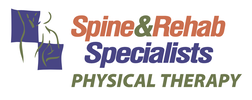blog
READ BELOW FOR INTERESTING INFORMATION, TIPS & TRICKS
ABOUT PHYSICAL THERAPY
ABOUT PHYSICAL THERAPY
|
Location
6358 Edgemere Blvd El Paso, Texas 79925 Phone: (915) 562-8525 Fax: (915) 566-3889 Office Hours Mon/ Wed - 7:30 AM to 6:30 PM Tue/ Thu - 7:15 AM to 6:30 PM Fri - 7:30 AM to 5:30 PM (by appointment only) |
Location
11855 Physicians Dr. El Paso, Texas 79936 Phone: (915) 855-6466 Fax: (915) 855-6181 Office Hours Mon/Wed - 7:30 AM to 6:30 PM Tue / Thu - 7:45 AM to 7:00 PM Fri - 7:30 AM to 5:30 PM (by appointment only) |
